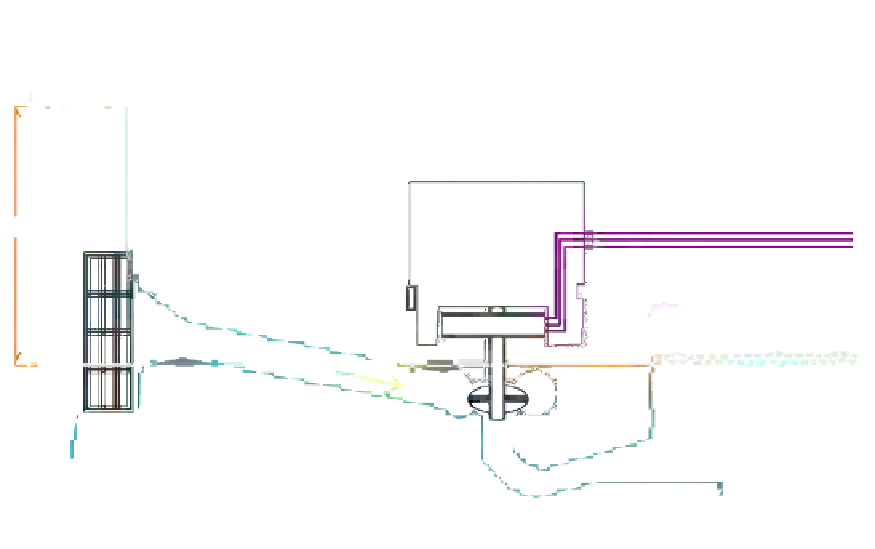Biomedical Engineering Reference
In-Depth Information
Reservior
Powerhouse
Power lines
h
Intake
Generator
Penstock
Q
Turbine
River
FIGURE 15.6
A schematic of a hydropower plant.
At the beginning of the twentieth century, a large number of small hydroelectric power
plants were being constructed by commercial companies in the mountains that surrounded
metropolitan areas. By 1920 as 40% of the power produced in the United States was hydro-
electric, the Federal Power Act was enacted into law. The Act created the Federal Power
Commission whose main purpose was to regulate hydroelectric power plants on federal
land and water. As the power plants became larger, their associated dams developed addi-
tional purposes to include flood control, irrigation, and navigation. Federal funding became
necessary for large-scale development and federally owned corporations like the Tennessee
Valley Authority (1933) and the Bonneville Power Administration (1937) were created. Addi-
tionally, the Bureau of Reclamation which had began a series of western U.S. irrigation
projects in the early twentieth century was now constructing large hydroelectric projects
such as the 1928 Boulder Canyon Project Act. The U.S. Army Corps of Engineers was also
involved in hydroelectric development, completing the Bonneville Dam in 1937 and being
recognized by the Flood Control Act of 1936 as the premier federal flood control agency.
Hydroelectric power plants continued to become larger throughout the twentieth century.
After the Hoover Dam's initial 1345 MW power plant became the world's largest hydroelec-
tric power plant in 1936, it was soon eclipsed by the 6809 MW Grand Coulee Dam in 1942.
Brazil's and Paraguay's Itaipu Dam opened in 1984 as the largest, producing 14,000 MW
but was surpassed in 2008 by the Three Gorges Dam in China with a production capacity
of 22,500 MW. Hydroelectricity would eventually supply countries like Norway, Democratic


Search WWH ::

Custom Search